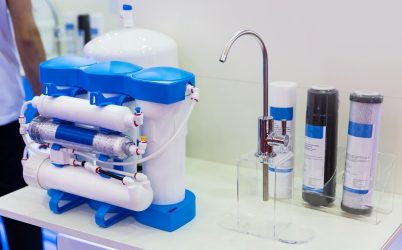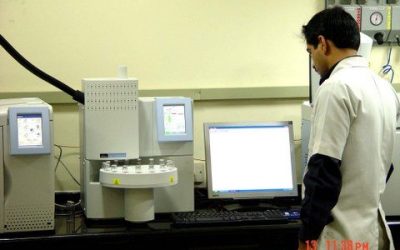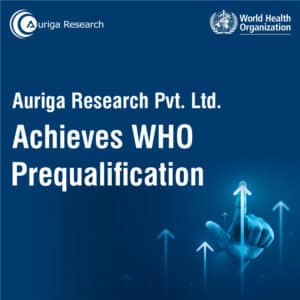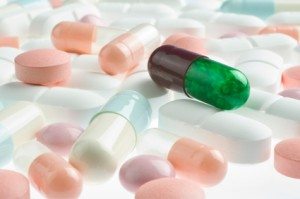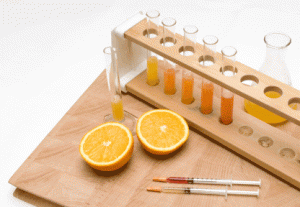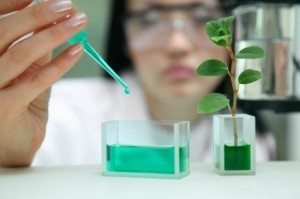
Inorganic Impurities are a critical quality attribute of drug substance and drug products because they have the potential to affect the safety and efficacy of the product. The regulatory and compendial standards for the control of impurities continue to evolve due to advancement in analytical science, technology and toxicology.The International Conference on Harmonisation guidelines defines impurity as any component of the drug substance that is not the chemical entity defined as the drug substance and affects the purity of the active ingredient.
The active pharmaceutical ingredient (API) is produced by organic chemical synthesis. In these processes components like residual solvents and the traces of inorganic and organic components can be generated. The remaining component in API is considered as impurities.
Identification, Quantification and Control of Impurities
Pharmaceutical impurity testing, identification and quantification are vital to address the purity, safety and control over the quality of drug substances or finished drug products.
Sources of Inorganic Impurities
Pharmaceutical inorganic impurities can arise from several sources which include initial materials and their contaminants, reagents, catalysts, solvents, intermediates, excipients and their contaminants, leachable and degradation products. They can be organic impurities, process and drug-related, inorganic or elemental impurities.
Significantly, these impurities are often present at very low levels in highly complex sample matrices, and consequently, sensitive and specific assay methods are required to determine the levels of the impurity to collect the data required to complete relevant risk assessments.
Examples of Inorganic Impurities
One of the concerns of the US FDA is nitrosamine related impurities such as NDMA which is the result of the manufacturing process. The limits of inorganic impurities are set up due to toxicity such as mercury, arsenic, hydrazine etc.
Difference Between Organic and Inorganic Impurities
Organic Impurities
Organic impurities arise at the time of synthesis, purification and storage of drug substance. Primarily, it is process-related or drug-related pharmaceutical impurities.
Organic volatile impurities are residual solvents that are produced during the synthesis of drug substances or in excipients used in the production of drug formulations.
Inorganic Impurities
Inorganic impurities often derive from the manufacturing process such as reagents, ligands, catalysts, heavy or residual metals, inorganic salts, filter aids, or charcoals. Inorganic contaminants can be detected and quantified using pharmacopeial standards.
Source of Impurities in Pharmaceutical Inorganic Chemistry
The impurities in pharmaceuticals remain with the active pharmaceutical ingredients (APIs) or develop during the formulation. The presence of these unwanted chemicals even in trace amounts may influence the efficacy and safety of pharmaceutical products.
Raw Materials
The raw material in pharmaceutical manufacturing often has impurities which eventually contaminate the final products thereby affecting the efficacy and safety of the product.
Manufacturing Method
The impurities such as reagents in the manufacturing process like Anions, Chlorine, and Sulphur Monoxide are common impurities in many substances.
Residue on ignition
The most general and most rapid method to get a picture about the overall inorganic impurity content for bulk substances is the determination of the residue on ignition.
Chloride
The semi quantitative limit tests for chloride is based on the formation of silver chloride precipitation upon addition of silver nitrate reagent to the aqueous solution of the sample to be tested acidified with nitric acid. The turbidity of the resulting solution is compared visually by viewing against the black background with that of a standard solution containing a known quantity of chloride.
Fluoride
Traces of fluoride ions in drug materials can be estimated by various calorimetric methods. The European Pharmacopoeia uses a reagent containing the cerium.
Sulphate
The limit test for sulphate is based on the formation of insoluble barium sulphate when barium chloride reagent is added to the solution of the test material acidified with hydrochloric acid.
Phosphate
The quantitative or semi quantitative determination of phosphate ions in drugs is usually based on the formation of coloured heteropolyacids
Heavy Metals
The general limit of heavy metal is based on the formation of insoluble coloured precipitate when these ions are reacted in moderately acidic solution.
Therefore any extraneous material present in the drug substance has to be considered an impurity even if it is totally inert or has superior pharmacological properties.The main source of heavy metal is the water used in the processes and reactors where acidification or acid hydrolysis takes place.
The manufacturing processes for the bulk drugs cause inorganic impurities such as reagents, ligands, catalysts, heavy metals and other material like acids, charcoal etc. The stainless steel reactors cause acidification and acidic hydrolysis.
In bulk drug manufacturing plants filtering aids such as centrifuge bags are routinely used. In many cases activated carbon is also used. The regular monitoring of fibers and black particles in the bulk drug is essential to avoid these contaminations.
Inorganic impurities may also obtain from the manufacturing process and refer to the impurities consists of major ions like nitrate, phosphate etc
Effects of Impurities
- Toxic impurities may be injurious when present above a certain limit ( eg lead, heavy metal, arsenic).
- Impurities present in traces may exert cumulative toxic effects after a certain period.
- It may lower the active strength of the substance and thus decreases its therapeutic effect.
- Moreover, impurities can cause change in physical and chemical properties of the substance.
- It can also bring technical glitches or disturbance in the formulation of the drug product.
- It can decrease the shelf life of the substance.
- Impurities may cause change in colour, taste and odour etc.
A Quick Look at the Source of Inorganic Impurities in Manufacturing process
Reagents used in manufacturing
If reagents used in the manufacturing process are not completely removed by washing these may find entry into the final products. For Instance Ammoniated mercury may be prepared by adding a solution of mercuric chloride to dilute ammonia solution.
The precipitate of ammoniated mercury (final product) is washed with cold water to remove ammonium hydroxide.
If it is not removed completely by washing with water, the final product may contain in it Ammonium hydroxide as impurity.
Generally water is the main source of heavy metals like Sodium(Na), Magnesium (Mg), Chromium (Cr), Cadmium(Cd) and Arsenic (Ar) used during the manufacturing process where acidification and acid hydrolysis takes place .
The problem can be tackled by using glass lined reactors and de-mineralized reactors. Other materials filter aids charcoal), centrifuge tubes are generally used in manufacturing of bulk drugs and in some cases activated carbon is also responsible for the source of impurity.
Defects in Manufacturing Process
- Defects in manufacturing processes like imperfect mixing, incompleteness, non-adherence to proper temperature, pressure, and pH may give chemical compounds with impurities in them. (Eg zinc oxide is prepared by heating metallic zinc to bring redness in a current of air).
- If there is less heat or air or both, zinc metal is not completely converted to zinc oxide. Thus the final product, zinc oxide may still contain metallic zinc as impurity.
Manufacturing Hazards
Particulate contamination
The presence of unwanted particulate matter can arise due to dirt, dust, glass, porcelain, or plastic fragments from sieves, granulating or tableting machines or from product containers.
Process Errors
Errors arising from incomplete solutions of a solute in a liquid preparation must be detected readily by the normal analytical control procedures.
Cross Contamination
The handling of powders, granules and tablets in a large bulk creates air-borne dust which leads to cross contamination of the product.
Microbial Contamination
Parental Preparation and Ophthalmic preparations require special care against microbial contamination.
Packing Errors
Products of similar appearance such as tablets of same size, shape, color, packed in similar containers can constitute a potential source of danger.
Improper labeling or destruction of stock of unused labels also constitute potential hazard.
Our Facilities to Analyze and Detect Inorganic Impurities in Pharmaceuticals
Our laboratories in pan India locations are well equipped to carry out inorganic impurities analysis and detection from its nitrosamine is the major element in conditions of manufacturing agent in pharma testing of products in consideration of development of final products in manufacturing.
We support product development right from its initial stage to the final product. Our laboratories are in compliance with Good Manufacturing Practices (GMP) to test new drug substances (ICH Q3A (R2)) and new drug products (ICH Q3B (R2). Our experts are proficient in method development and validation analytical procedures.
We significantly provide method development and validation expertise to address the determination
We support you by accelerating drug development programs and impurity monitoring to ensure Total Quality Assurance to fulfil quality, safety and regulatory requirements.
Over the years we have worked with most of the leading companies in this field in India and supported their operations within India and around the world. Contact us today to get a customised solution for your requirements. You can use the quick query form on the right or call us now at +91-11-45754575.




